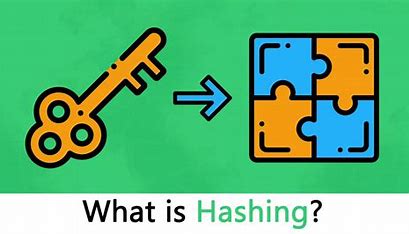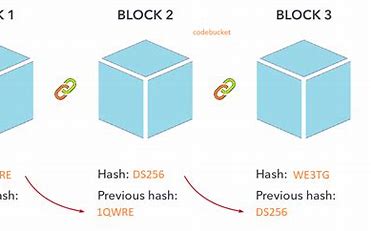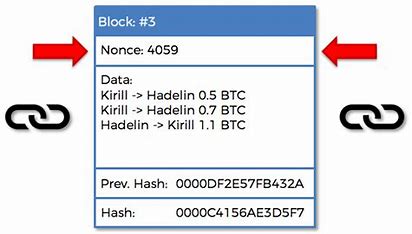Blockchain Basics Part 1: Hashes, Blocks, Nonces, and Mining Explained
 Navya Srivastava
Navya Srivastava
Introduction
Blockchain technology is a cornerstone of modern digital innovations, powering everything from cryptocurrencies to decentralized applications. At its core, blockchain relies on several key concepts that ensure security, integrity, and functionality. This article will delve into the fundamental components of blockchain technology, including hashes, blocks, nonces, and mining, to help you understand how they work together to maintain the integrity and security of a blockchain network.
What is a Hash?
A hash is a unique, fixed-length string that serves as an identifier for a piece of data. This identifier is generated by inputting the data into a hash function. Think of a hash as a unique fingerprint for data. Just like no two human fingerprints are the same, no two pieces of data should have the same hash.

How Hash Functions Work
Hash functions are essential tools in cryptography and blockchain technology, designed to process data and produce a unique identifier for it. Here’s a step-by-step explanation of how they work:
Input Data: The hash function starts with any piece of input data. This could be anything from a simple text document to complex transaction records or large files. The input data is fed into the hash function as a sequence of bytes.
Hash Function: The core of the process is the hash function itself. This function is a mathematical algorithm that takes the input data and performs a series of complex operations on it. The hash function applies various transformations to the data, including mixing, shuffling, and compressing, to ensure that even the slightest change in the input data produces a significantly different output.
Output (Hash Value): The result of this process is the hash value, a fixed-length string of characters. No matter the size of the input data, the hash value always has the same length. This string is a unique fingerprint of the input data, meaning that even a small alteration in the original data will produce a completely different hash value. Common hash algorithms include:
SHA-256: Part of the SHA-2 family, it generates a 256-bit hash value, widely used in blockchain technologies like Bitcoin.
SHA-3: The latest member of the Secure Hash Algorithm family, providing a different approach to hashing with high security.
MD5: An older hash algorithm that produces a 128-bit hash value, now considered less secure but still in use for non-cryptographic purposes.
In summary, a hash function takes input data, processes it through a series of transformations, and outputs a unique, fixed-length string that represents the original data. This hash value is crucial for ensuring data integrity and security across various applications.
Hashes are fundamental to blockchain technology for several reasons:
Data Integrity: Hashes help verify that data hasn't been tampered with. If even a small part of the data changes, the hash value will change drastically.
Block Linking: Hashes link blocks in a secure, chronological order.
Proof of Work: Hashes facilitate the mining process by requiring a specific hash to validate new blocks.
Digital Signatures: Hashes enable secure digital signatures for transaction verification.
Block, Nonce & Mining
Block
Imagine it as a digital container. Each block stores a list of transactions, a timestamp, and a reference to the previous block. This helps create a chain of blocks (a blockchain) where each block is securely linked to the one before it.

Nonce
A nonce is a random or semi-random number used in the mining process of a blockchain. The term stands for "number used once." Miners adjust the nonce to find a valid hash for a block. This is crucial in the Proof of Work (PoW) consensus mechanism.
Mining Puzzle: In PoW, miners must find a nonce that, when combined with the block’s header data and hashed, produces a hash that meets specific criteria (like having a certain number of leading zeros).
Trial and Error: Miners increment the nonce and hash the resulting block header repeatedly until they find a nonce that results in a valid hash. This process is computationally intensive and probabilistic.
Mining
Mining is the process of validating transactions, finding a valid nonce, and adding new blocks to the blockchain. It involves:
Transaction Validation: Ensuring transactions are legitimate and adhere to network rules.
Computational Puzzle: Solving a complex computational problem to find a valid nonce.
Network Security: Securing the network by adding new blocks and preventing double-spending.
Rewards: Miners are rewarded with cryptocurrency or tokens for their efforts in securing the network.
Conclusion
Understanding hashes, blocks, nonces, and mining is crucial for appreciating the intricacies of blockchain technology. These components work together to ensure the security, integrity, and decentralization of the blockchain network. Hashes verify data integrity, blocks organize and link transactions, nonces drive the mining process, and mining itself maintains the network’s security and functionality.
For a deeper dive into the basic parts of Web3, including how blockchain, smart contracts, and decentralized applications fit into this ecosystem, check out our next article in this series.
Subscribe to my newsletter
Read articles from Navya Srivastava directly inside your inbox. Subscribe to the newsletter, and don't miss out.
Written by

Navya Srivastava
Navya Srivastava
Hi! I am Navya, a dedicated coding enthusiast, deeply interested in Web3 technologies and exploring the future of decentralized applications and blockchain innovation.